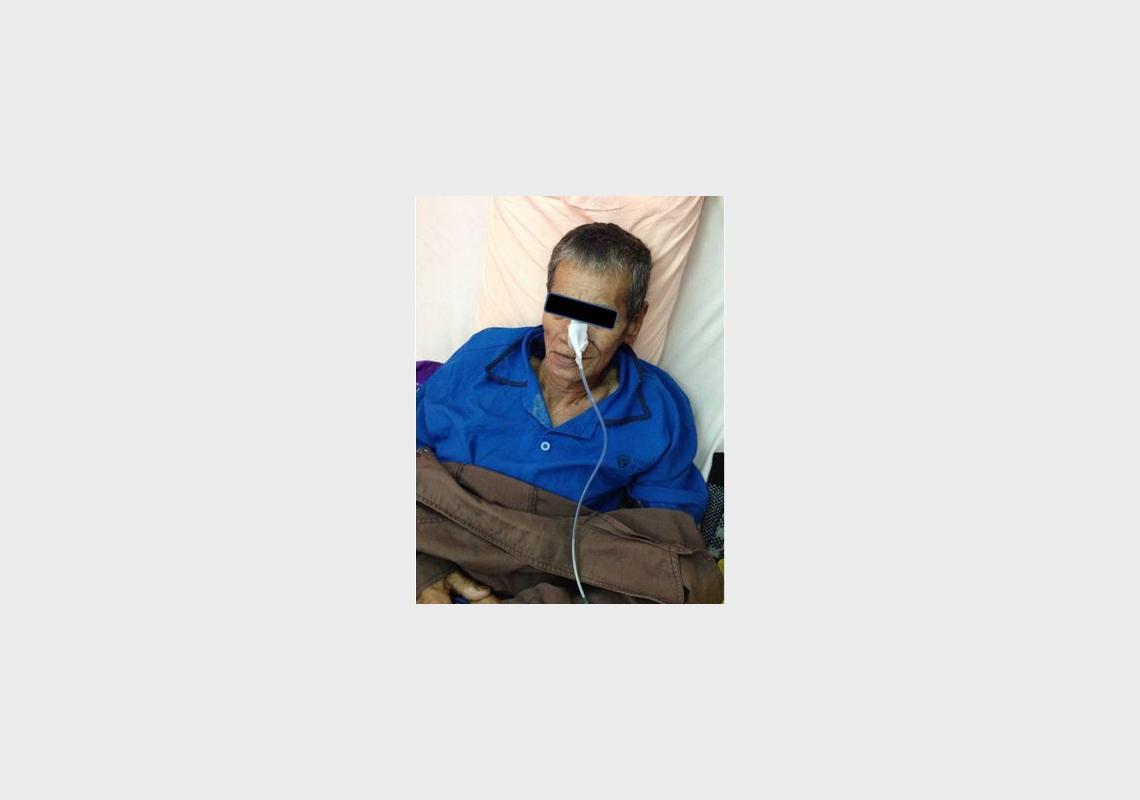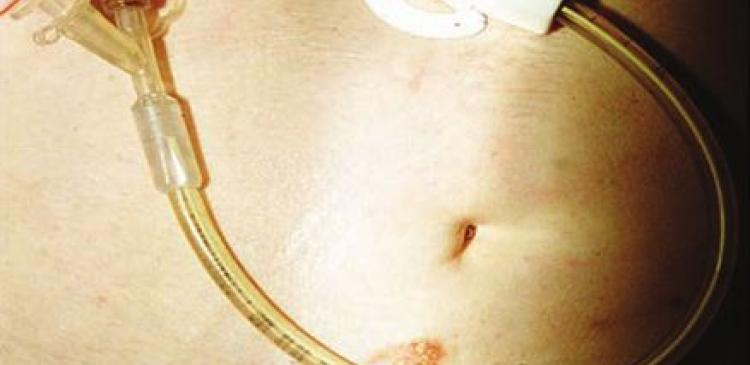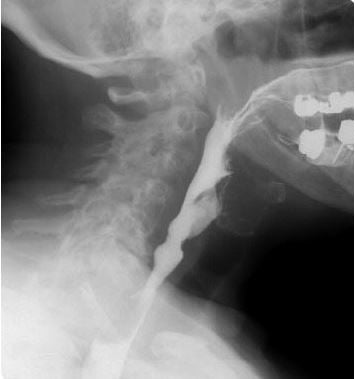Patient with nasogastric (NG) tube.
Dysphagia, or difficulty in swallowing, is not uncommon in older adults (up to 30% in those aged > 65 years). If not treated appropriately, dysphagia can lead to dehydration, malnutrition, respiratory infections, and eventually death. To ensure sufficient nutritional intake in older adults with dysphagia, artificial feeding is usually required. In the short-term, this can be achieved by nasogastric (NG) feeding - i.e. direct feeding into the stomach via a tube through the nose. However, if artificial feeding is required for a longer duration, i.e. longer than 6 weeks, international experts recommend feeding via a gastrostomy - i.e. direct feeding into the stomach via a tube which traverses the abdomen into the stomach. These gastrostomy tubes require a minor operation called percutaneous endoscopic gastrostomy (PEG) to insert the tube into the stomach. In the West (Europe and North America), PEG tubes have been shown to be superior as compared to NG tubes for long-term artificial feeding in older adults with dysphagia - with less complications and better nutrition. However, recent studies from both University Malaya researchers and other groups from Asia have shown that PEG feeding is rarely instituted in older Asian patients who need them.
To explore this observation further, Mohamad Hasif Jaafar, a PhD student from the Department of Medicine, Faculty of Medicine, University Malaya decided initially to conduct a systematic review of the published literature to identify barriers to PEG feeding from a global perspective. Mr Mohamad Hasif Jaafar was closely guided by his main PhD supervisor, A/Prof Tan Maw Pin, Consultant Geriatrician, for this systematic review project.
Through an extensive systematic review of the published literature globally, the team found that there were regional variations in perceptions towards PEG feeding, particularly among Asian adults and healthcare professionals when compared to the West. The area of feeding at the end of life is highly emotive in Asian cultures. Studies in Taiwan and Malaysia showed that people rejected PEG tube placements due to a concern of "loss of body integrity" and " an exaggerated perception of risks of PEG placement". Furthermore, a lack of financial reimbursement and low health insurance coverage among the elderly seem to influence the uptake of PEG feeding in Asians. Of additional concern, this study also identified that healthcare professionals looking after older Asians with dysphagia had a poor knowledge and skill with regard to choice and delivery of PEG feeding.
Following the findings from the global systematic review, the researchers then conducted a quantitative survey among participants attending the National Geriatric Conference 2014 in Kuala Lumpur. The participants at this conference constituted all healthcare professional groups involved in the care of older patients in Malaysia, such as nurses, doctors, physiotherapists, occupational therapists, to name a few. The findings from this survey indicated that the majority of healthcare professionals were convinced of the benefits and would advocate PEG tube feeding for long-term enteral feeding for their patients. However, limited funding in public hospitals, reluctance of family members of patients with dysphagia and a poor knowledge about the risks of PEG placement by participants were also identified as obstacles to PEG tube feeding.
To understand the decisions and choices made by healthcare professionals in Malaysia further, the researchers then conducted a qualitative study in a single institution, among various healthcare professionals at University Malaya Medical Centre. The qualitative study enabled respondents to express their views in their own sentences, instead of responding to an objective questionnaire. They revealed that major factors that influenced decision making included lack of financial support, poor knowledge among healthcare professionals, inadequate competency and skills, and insufficient information given to patients and caregivers regarding PEG tube feeding.
In summary, exploratory studies from the Department of Medicine at University Malaya have uncovered multiple issues involving attitudes and knowledge deficiencies of healthcare professionals, the public, Asian culture and limitations of healthcare systems which are preventing our older patients with dysphagia from receiving the appropriate type of artificial feeding. It is clear that further directed education of healthcare professionals is required and this needs to be done by the relevant professional organizations. It is anticipated that locally conducted clinical studies highlighting the benefits of PEG over NG feeding in Asian older patients, will help to change the attitudes of healthcare professionals in Malaysia.
Contact:
1. Mr Mohd Hasif Jaafar
Department Of Medicine, Faculty of Medicine,
University of Malaya, 50603 Kuala Lumpur, Malaysia.
Email: [email protected]
[2] A/Prof Dr Tan Maw Pin
Department Of Medicine, Faculty of Medicine,
University of Malaya, 50603 Kuala Lumpur, Malaysia.
Email: [email protected]





